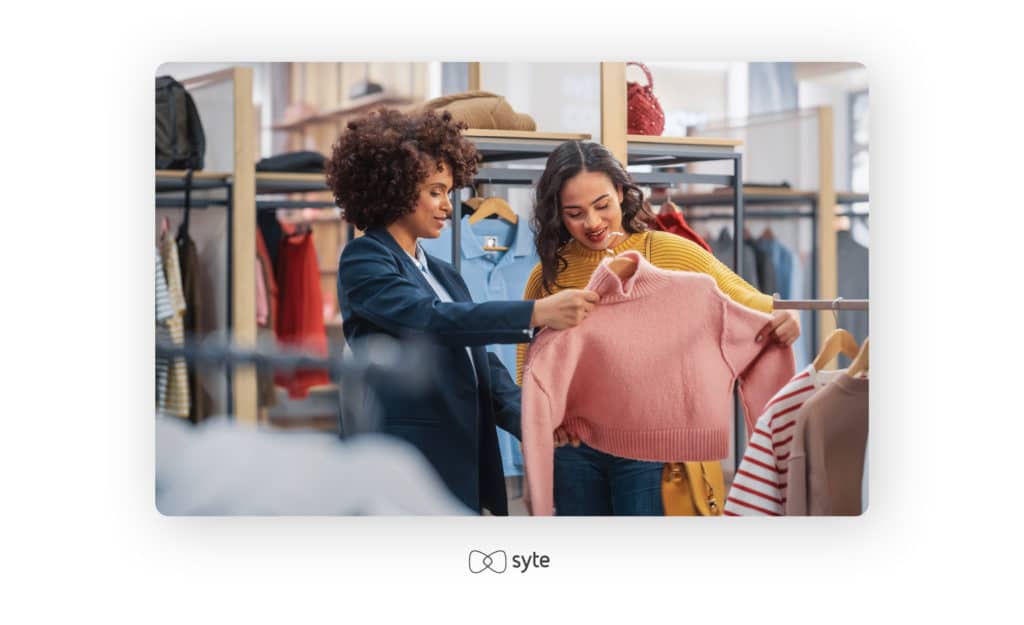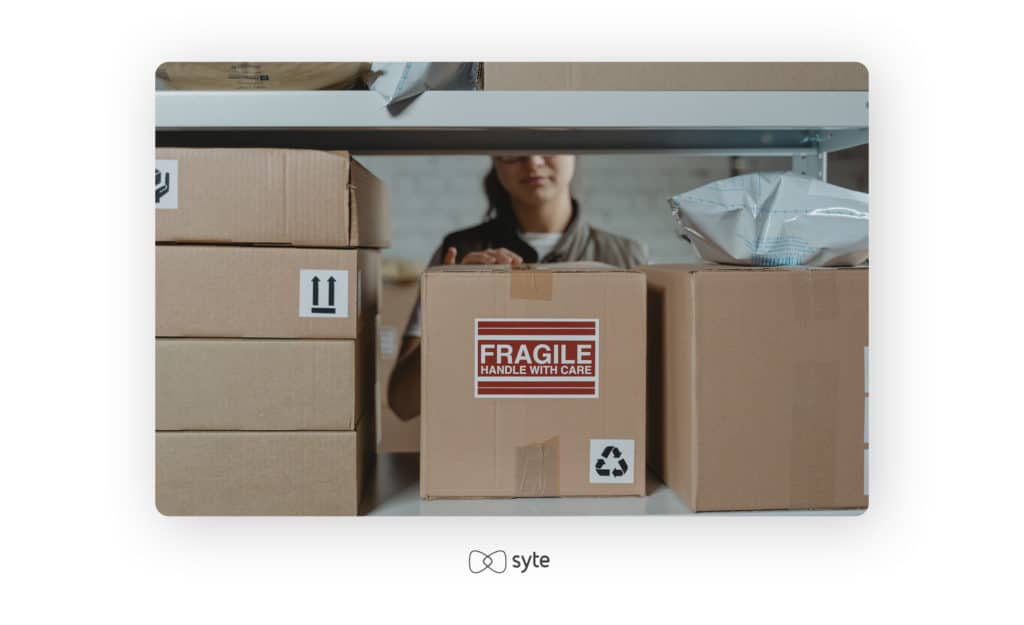Visual AI is already changing the way brands sell and consumers shop. How? You’ve probably encountered image search and similar product recommendations on your go-to sites or heard about cashierless stores and robot merchandisers. As we see more and more of these use cases popping up, you’ll notice how powerful visual AI is: It can bridge the gap between eCommerce and brick-and-mortar stores through omnichannel retail.
What is Visual AI?
For a quick recap, visual AI enables brands and retailers to extract value from visual data. It uses a combination of technologies including computer vision, natural language processing, and deep learning to analyze, understand, and gain insights from visual-based content such as images and videos.

With visual AI, you can unlock unprecedented opportunities for growth and innovation that can set in motion a truly effective omnichannel approach to retail and eCommerce. Now, let’s take a closer look at how this technology can give you the edge you need to succeed.
Visual AI Done Right: How It Supports Omnichannel Retail
On average, consumers use eight touchpoints before buying an item, with almost 50% using at least four. It’s no longer surprising for shoppers to discover you on social, compare prices on marketplaces, check out your products in-store, and end up completing a purchase online. This reinforces the importance of omnichannel retail and puts brands and retailers that are currently leveraging visual AI ahead of the pack. By automating the collection and organization of visual data across channels, you can take your eCommerce business to the next level. In this post, we’ll explain four ways to extract and transform actionable insights into better outcomes that contextually improve the end-to-end shopping experience.
1. Use visual AI to enable seamless and continuous product discovery
In 2022, consumers no longer see online and offline shopping as two separate experiences. Instead, digital tools are a key part of the overall customer experience. Today’s shoppers expect brands and retailers to support hybrid shopping journeys that seamlessly blend different physical and digital channels. In fact, hybrid shopping is now the primary method for 27% of all consumers – and 36% of Gen Z shoppers.
There are countless ways for hybrid shoppers to channel hop throughout the shopping journey. The goal-oriented shopper may research a product online before venturing out to complete an in-store purchase. Others may see something they like while out and about, and then go home to see if they can find a better deal online. Those who are hesitant to complete a purchase online or prefer to see an item in person may still visit a brand’s website to answer questions about the nearest physical location or best hours to shop (with the lowest traffic and wait times). Social media users may be inspired to check out a new brand or retailer after seeing a product posted by their favorite influencer.

With an endless variety of paths to purchase, it’s become absolutely critical for brands and retailers to provide a seamless omnichannel product discovery experience. Here are a few examples of how to use visual AI to achieve that goal:
- When a shopper uses the image search function on your eCommerce site, you can offer a “View In Store” button that provides the address of the nearest in-store branch carrying that item. This may be helpful for those who want to see an item in real life before purchasing. For an extra boost of personalization, you can set alerts to notify store workers when an online shopper clicks on this button – and the store staff can be ready and waiting to answer any questions and close the deal.
- Add a smart mirror to your in-store fitting room to make the experience more fun and engaging. Sensors behind the glass can scan a shopper’s look and then offer an array of visually similar products on a digital screen right next to their reflection. This is also an opportunity to help customers discover complementary items to complete the look. For consistency, a similar experience can be replicated online with the use of augmented reality.
- When an item is out of stock on your website, visual AI technology can encourage continuous customer journeys by automatically displaying similar items that are available for purchase – just like a store assistant might bring alternative options into the fitting room when a shopper’s size is out of stock. In addition, smart mirrors in-store can show details of other store branches that do have that item in stock. They can also prompt shoppers to leave their details and opt for notifications or instant delivery once a product becomes available again.
- For customers who aren’t ready to buy now, you can allow them to create wishlists that are intuitively accessible across your brand’s platforms. Then, you can use the data to personalize product discovery on your homepage or email campaigns. Using the same wishlists, shoppers can also receive targeted promotions that incorporate online offers or incentives to explore and buy products in your brick-and-mortar store.
2. Optimize the in-store and online experience with analytics

Data driven decision making is a critical part of becoming an industry leader. Here are a few ways to use visual AI analytics to propel your eCommerce business:
- In brick-and-mortar stores, brands and retailers can better understand consumer behavior and preferences through data gathered from footfall analysis and in-store traffic and interactions. Real-time visibility into what’s happening on the ground enables store managers and merchandisers to craft buyer paths that will actively engage shoppers, while simultaneously educating them about which paths are not working or, worse, turning consumers off.
- The same in-store analytics can inform eCommerce-based customer touchpoints, including face-to-face VIP appointment scheduling, social media updates, and customer service communication. In addition, shoppers can add items to their cart either in-store or online, and check out via the channel that’s most convenient for them when they’re ready to buy.
- Brands and retailers like Chow Sang Sang, who have thousands of SKUs in stock at any given time, are not limited to using visual search data on their websites. They can also use this visual search on their internal inventory network to help shoppers find their ideal items while shopping in physical store locations.
3. Build loyalty with context-based personalization
eCommerce and retail, in general, are saturated spaces. To stay competitive and build loyalty, brands need to provide consistent value and focus on nurturing long-term customer relationships. With visual AI, you can collect enriched data on customer interactions and use it to create personally-relevant brand experiences that can be leveraged both in-store and online.

For example:
- In eCommerce stores, you can use visual AI technology to analyze real-time browsing behavior and provide hyper-personalized experiences that keep tabs on customers’ changing needs, goals, and intentions throughout the buying journey. With context-aware personalization, major companies like Decathlon have been able to deliver highly consistent and relevant promotions that adjust depending on shoppers’ real-time intent. To keep the journey going, visual AI can help you craft dynamic ads and emails that are unique to each shopper.
- Visual AI can also capture and track the specific, granular details of products your shoppers engage with on-site and in-store (e.g. material, style, pattern, price point, etc.) With knowledge of contextual customer preferences and purchase history, you can enable in-store sales associates to provide better, more targeted service that caters to each shoppers’ unique interests, leaving them feeling seen and valued.
- Visual AI can measure and classify visual “mentions” on social media. This can help you to boost organic engagement with shoppers and highlight real-time social proof on your site and in-store.
- An added benefit of AI technology is that over time, it will learn from past purchases, email and social engagement, and real-time search queries – which automatically and continuously improves personalized product discovery and purchase experiences of individual shoppers.
4. Efficiently manage inventory and supply chain
Traditionally, product tags have been assigned manually – which takes a lot of manpower and is a relatively subjective task. Visual AI can extract nuanced product details and assign appropriate tags faster and with more consistency than humans. This frees up resources and enables your items to be more searchable – which not only supports relevant and intuitive product discovery, but also provides you with a better view of your inventory.

Here are a few ways you can use visual AI to more efficiently manage your inventory and supply chain:
- Search data and analytics can help optimize merchandising rules and promotions. You can prioritize accurate search results while also moving dead stock through smart product listings or discounts. The same information can be used in combination with shelf analytics to manage demands, making supply chain operations more sustainable.
- Having a clear view of inventory can also promote continuous cross-channel product discovery. You can provide shoppers who prefer to see products in-store with location details and in-store availability of the items on product detail pages.
- Visual AI can significantly enhance fulfillment and delivery strategies. With all SKU data in one place, it’s easier and faster for your warehouses, brick-and-mortar stores, and online channels to coordinate. You can also deliver convenience by giving shoppers the option to pick up in-store or have the products delivered to their doorstep.
What’s Next: Future-Proofing Your Business
With third-party cookies on the way out, Visual AI can create privacy-conscious buying journeys that are truly personalized because it relies on deep product data instead of shoppers’ demographic data. You can recommend products, build emails, and drive campaigns based on the tiniest visual product details that shoppers interact with. This way, they can get hyper-personalized experiences that intuitively understand their individual preferences – without having to disclose any personal information. In addition, the deep product data can also help brands and retailers save a lot on operational costs, production resources, and marketing expenses.
All of these benefits together make visual AI an extremely powerful tool that can truly bridge the gap between eCommerce and in-store retail. When each customer is viewed as an individual unit, not a part of a segment, you can achieve a much more complete view of each shopper. Then, you can use this information to deliver the ultimate personalization experience — one that’s within the boundaries of privacy limitations, but still unique and genuine enough to make your brand stand out and build long-lasting customer relationships.